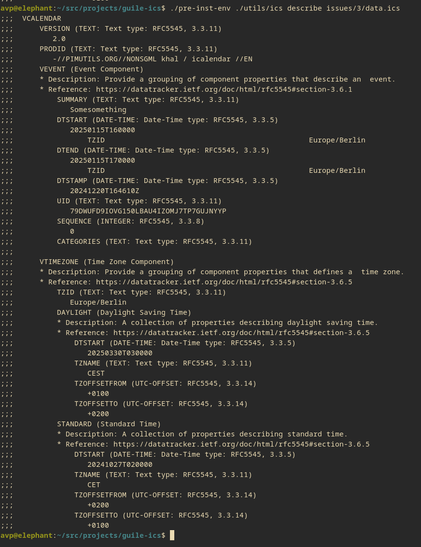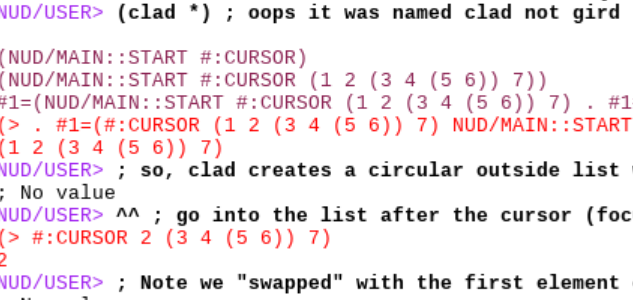#parser
Red Green Syntax Trees - an Overview | by Will Speak (aka Plingdollar):
https://willspeak.me/2021/11/24/red-green-syntax-trees-an-overview.html
Парсинг с помощью LLM: зачем, как и сколько стоит?
Во всю идет 2025 год, и нейросети перестают быть чем‑то фантастическим. Они уже повсюду в нашей жизни: от умных колонок в квартирах до сложнейших систем, управляющих логистикой и финансами. Вместе с ними стремительно меняется подход к работе с данными. В этой статье мы поговорим о том, как современные LLM помогают автоматизировать сбор данных с веб‑сайтов и сводят к минимуму рутинную настройку и «подкручивание» парсеров. Что еще вы найдете в этой статье?

who doesn't love a good #parser #differential #vuln in the morning? https://github.blog/security/sign-in-as-anyone-bypassing-saml-sso-authentication-with-parser-differentials/

To the #Rust #rustlang community: I once started to write a #compiler / #parser with #nom #crate. However I had some struggles with it of how to provide **multiple** errors with line+column indicators for a parsed context.
Now I read a tiny bit about #syn and #chumsky
Are they the right crates for me? Are there others?
I do not parse rust-code, but a completely custom language (similar to pugjs)
(Boost for reach )
Saviez-vous qu'en JavaScript `parseInt('`)` retourne 2 ?
Il y a une raison logique à cela.
C'est une combinaison de la composition de cet emoji et du fonctionnement de `parseInt` et cet article l'explique très bien.
https://www.aleksandrhovhannisyan.com/blog/parseint-keycap-emoji/
#lispyGopherClimate #lisp #programming #podcast #live Wednesday 0UTC https://archives.anonradio.net/202503050000_screwtape.mp3
#climateCrisis #haiku and #risk #inequality #essay by @kentpitman
https://netsettlement.blogspot.com/2013/08/lien-times-for-startups.html
#libre #archive update from @hairylarry https://gamerplus.org/@hairylarry/114106383066762290
https://www.european-lisp-symposium.org/2025/index.html
#ELS2025 submissions extended to Sunday. #LaTeX #ACM #primer / past #proceedings
Notes from my first #language #parser #commonLisp #mcclim #chess
If there are guests, there are guests(?)
@NanoRaptor The PDF link doesn't seem to work anymore. Here's an archive URL of this beautiful poster/grammar:
nom 8 has been released, https://unhandledexpression.com/nom-8/.
nom is a parser combinator library, and a damn excellent one! @geal has put a lot of awesome new features in it, check it out!
Trying to improve my Tree-sitter #parser for my new #esolang Bespoke, so that it recognizes things like commands and comments.
Trouble is, I can't figure out how best to handle block comments. And when I tried a workaround...it crashed my computer.
This is gonna be tough.
In Bespoke, words are first turned into digits, then the digits are turned into commands.
Block comments start and end with 0...0, where ... is an arbitrary digit sequence.
I need the digits before I can detect the commands, so I'm unsure how to handle this with Tree-sitter.
輸入:
@foo
{@foo|@bar|12\|}
輸出:
Any[Main.uahgi.Parsing.ID("foo"), "\n",
Main.uahgi.Parsing.SEQ(Any[Main.uahgi.Parsing.ELE(Any[Main.uahgi.Parsing.ID("foo")]),
Main.uahgi.Parsing.ELE(Any[Main.uahgi.Parsing.ID("bar")]), Main.uahgi.Parsing.ELE(Any["1", "2",
Main.uahgi.Parsing.ESC_CHAR("|")])])]```
Parsec這樣還是很不錯的。(參考:
https://repo.kianting.info/yoxem/uahgi/src/branch/main/src/parsing.jl )
#Julia #Parser #ParserCombinator
(Towards):
A #sidescrolling #textAdventure #game as the host of a Pratt Grammar #Parser:
https://lispy-gopher-show.itch.io/lispmoo2/devlog/870779/a-sidescrolling-game-as-a-pratt-parser
#itch #itch_io #gameDev #lisp #commonLisp #repl
Sharpsign lengthy and wandering. Sharpsign happy 2025
Basically, I was having trouble imagining parsing a grammar at all. So I imagined input tokens as a sidescroller level I could cdr-code speedrun passes of. And you know, when lisp people imagine things it happens in real life too.
Article passionnant sur comment passer de 5 minutes à 11 secondes pour traiter un fichier de 12 Go avec Node. Très didactique, notamment sur l'utilisation des streams.

Want to start the new year with a good deed? Play some dope short IF games and vote :D
I just released pyparsing 3.2.1 with a very cool addition to the railroad diagrams that pyparsing generates for its parsers - non-terminal diagram elements now link to their definitions elsewhere in the diagram! This is pretty handy when the diagram is for a complex parser, as in this demo of a parser/evaluator for time references like "3 weeks from today" or "0800 two days from now" or "in exactly twenty-four hours". #pyparsing #python #parser #railroaddiagram
Currently dallying with a simple embedded, statically typed scripting language. The magic is an extensible lexer and parser, with the hosting application able to do something like
VM_addCommand(vm, KEYWORD(“open”), KEYWORD(“file”), TYPE(STRING), KEYWORD(“as”), REFERENCE, END);
to allow something like
open file “foo.txt” as myFile
It’s obviously been done before, but it’s fun to play with. I haven’t done enough #compiler or #parser work lately.










